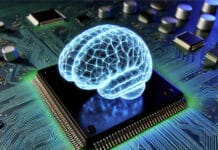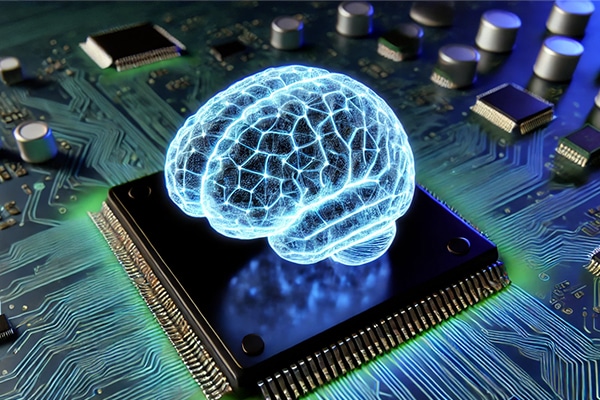Here’s an overview of how open source frameworks are being utilised to build quantum machine learning models, including quantum neural networks and quantum kernel methods. The challenges and future directions in the quantum AI landscape are also discussed.
The convergence of quantum computing and artificial intelligence (AI) holds transformative potential, especially in areas requiring high computational power such as large scale data analysis, optimisation, and pattern recognition. Quantum computing, based on principles like superposition and entanglement, can process and store information in entirely new ways. When applied to machine learning (ML), it promises substantial speedups and the ability to tackle previously intractable problems. However, developing quantum-enhanced machine learning solutions is complex and requires specialised tools. Here, open source frameworks play a crucial role by offering accessible platforms and libraries that allow researchers, developers, anfigurd organisations to experiment and advance the field without the need for expensive proprietary software.
How quantum-enhanced AI works
Quantum-enhanced AI represents a major leap in computing by leveraging the principles of quantum mechanics to overcome the limitations of classical computing. Unlike classical computing, which relies on bits that represent either 0 or 1, quantum computing uses qubits, which can exist in a state of 0, 1, or both simultaneously through superposition. Furthermore, qubits can be entangled, meaning the state of one qubit can directly influence the state of another, regardless of the distance between them. These properties allow quantum computers to perform complex computations at extraordinary speeds, achieving levels of parallelism that are unattainable with classical systems.
Figure 1 shows the flow of quantum data (QD) through the quantum CPU and its interaction with machine learning applications like biometric recognition and autonomous driving.
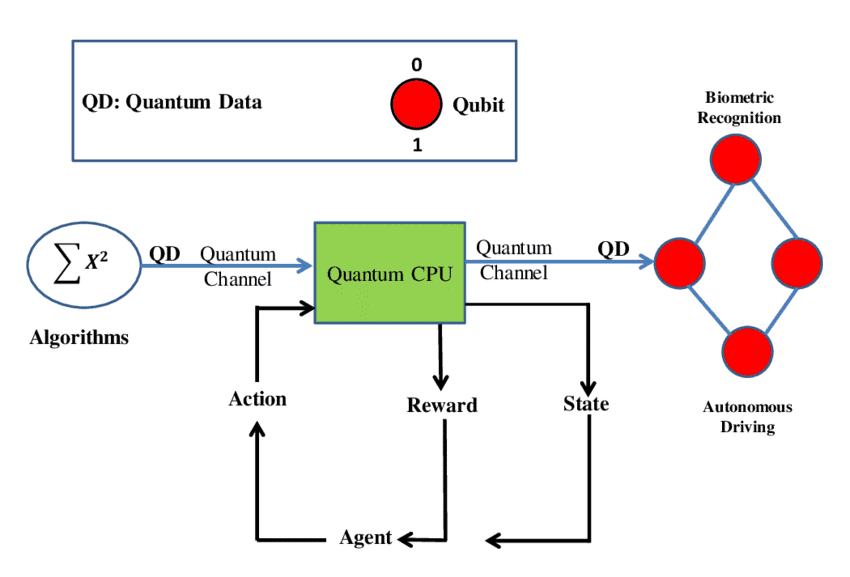
Quantum mechanics principles: Superposition and entanglement
Superposition: Superposition allows qubits to hold multiple states at once. This means that a quantum computer can process a vast amount of data simultaneously. For AI applications, superposition enables parallel processing, where multiple computations are carried out at once, significantly speeding up tasks like data analysis, model training, and pattern recognition.
Entanglement: Through entanglement, qubits become interlinked in such a way that the state of one qubit directly affects the state of another, even if they are separated by large distances. In AI, entanglement allows more efficient data processing and optimised model accuracy by maintaining coherence among data elements, which is particularly useful in complex, large scale computations.
Computational advantages: Speed and parallel data processing
The unique characteristics of quantum computing—superposition and entanglement—allow it to process exponentially more data in less time than classical computers. Quantum-enhanced AI applications take advantage of this capability by executing multiple computations at once, drastically reducing the time needed to solve complex problems. For instance, quantum algorithms can perform optimisation tasks much faster, making them suitable for AI models that require rapid processing, such as those used in logistics, financial forecasting, and natural language processing. This ability to handle massive datasets in parallel enables more robust machine learning models and faster predictions, facilitating real-time decision-making across various industries.
Applications in optimisation, machine learning, and data analysis
Optimisation: Quantum algorithms such as the Quantum Approximate Optimization Algorithm (QAOA) and the Variational Quantum Eigensolver (VQE) are designed to solve complex optimisation problems that classical methods struggle to address. Optimisation is a cornerstone of AI and machine learning, particularly in areas such as supply chain management, portfolio optimisation in finance, and pathfinding in logistics.
Machine learning: Quantum-enhanced machine learning accelerates tasks such as model training and pattern recognition. Techniques like quantum support vector machines (QSVMs) and quantum neural networks (QNNs) allow AI models to process and classify data faster and more accurately. This is particularly beneficial in high-stakes applications, such as healthcare, where real-time and precise data analysis can make a significant difference in diagnosis and treatment.
Data analysis: Quantum computers excel at handling large and complex datasets, which are common in fields like genomics, environmental modelling, and financial markets. Quantum-enhanced AI algorithms can analyse patterns and correlations in data that classical computers cannot process in a reasonable time. This advancement is crucial for predictive analytics, enabling organisations to make more informed decisions based on intricate data insights.
In sum, quantum-enhanced AI holds the potential to transform fields reliant on computationally intensive tasks by harnessing quantum computing’s unmatched speed, efficiency, and data processing power.
Core open source frameworks for quantum machine learning
Open source tools have become invaluable resources in the quantum and AI communities, with frameworks such as Qiskit, PennyLane, and TensorFlow Quantum offering the tools necessary to design, simulate, and implement quantum-enhanced machine learning algorithms.
Qiskit: Developed by IBM, Qiskit is one of the most widely used frameworks in the quantum computing domain. It supports quantum circuit design, optimisation, and the implementation of quantum machine learning models. Qiskit’s machine learning module includes tools for creating quantum neural networks, quantum support vector machines (SVMs), and quantum classifiers, making it ideal for building and testing ML models on IBM’s quantum processors.
PennyLane: A library by Xanadu, PennyLane is specifically designed for hybrid quantum-classical computations, making it an excellent choice for quantum machine learning. PennyLane integrates with PyTorch and TensorFlow, which enables seamless development of hybrid models. It also provides plugins for various quantum hardware platforms, making it flexible for different quantum backends and accessible to both quantum and classical machine learning practitioners.
TensorFlow Quantum: TensorFlow Quantum (TFQ) is Google’s open source library that allows developers to design quantum models using the TensorFlow framework. TFQ is geared towards hybrid quantum-classical models and is built to leverage quantum machine learning with TensorFlow’s extensive ecosystem. It is well-suited for researchers focusing on quantum neural networks and complex data analysis.
Each of these frameworks is designed to make quantum machine learning more accessible and to encourage collaboration across the quantum and AI communities. By providing intuitive libraries and cross-platform capabilities, these tools support the development of scalable and reproducible quantum machine learning solutions.
Quantum neural networks (QNNs) and quantum kernel methods
One of the most promising areas in quantum machine learning is the development of quantum neural networks (QNNs). QNNs leverage quantum mechanics to process information in ways that classical neural networks cannot, potentially leading to breakthroughs in fields like image recognition, natural language processing, and other data-intensive applications. QNNs are still in the early stages of development, but they offer potential advantages such as increased parallelism and faster training times for certain problem types. For example, a QNN can be implemented in Qiskit or PennyLane using specialised quantum layers that encode data into quantum states, allowing models to learn complex relationships in data more efficiently.
Another essential tool in quantum-enhanced machine learning is the quantum kernel. Quantum kernels are particularly useful for support vector machines (SVMs) and other kernel-based learning methods that rely on similarity measures. Quantum SVMs can process information in high-dimensional spaces and are expected to outperform classical counterparts in tasks involving large datasets with intricate patterns. By utilising quantum kernels, machine learning models can better identify non-linear relationships in data. Tools like Qiskit’s machine learning module offer functionality for building and training quantum kernel-based models, making it accessible for real-world applications such as anomaly detection and data classification.
Figure 2 compares classical and quantum neural network achitectures.
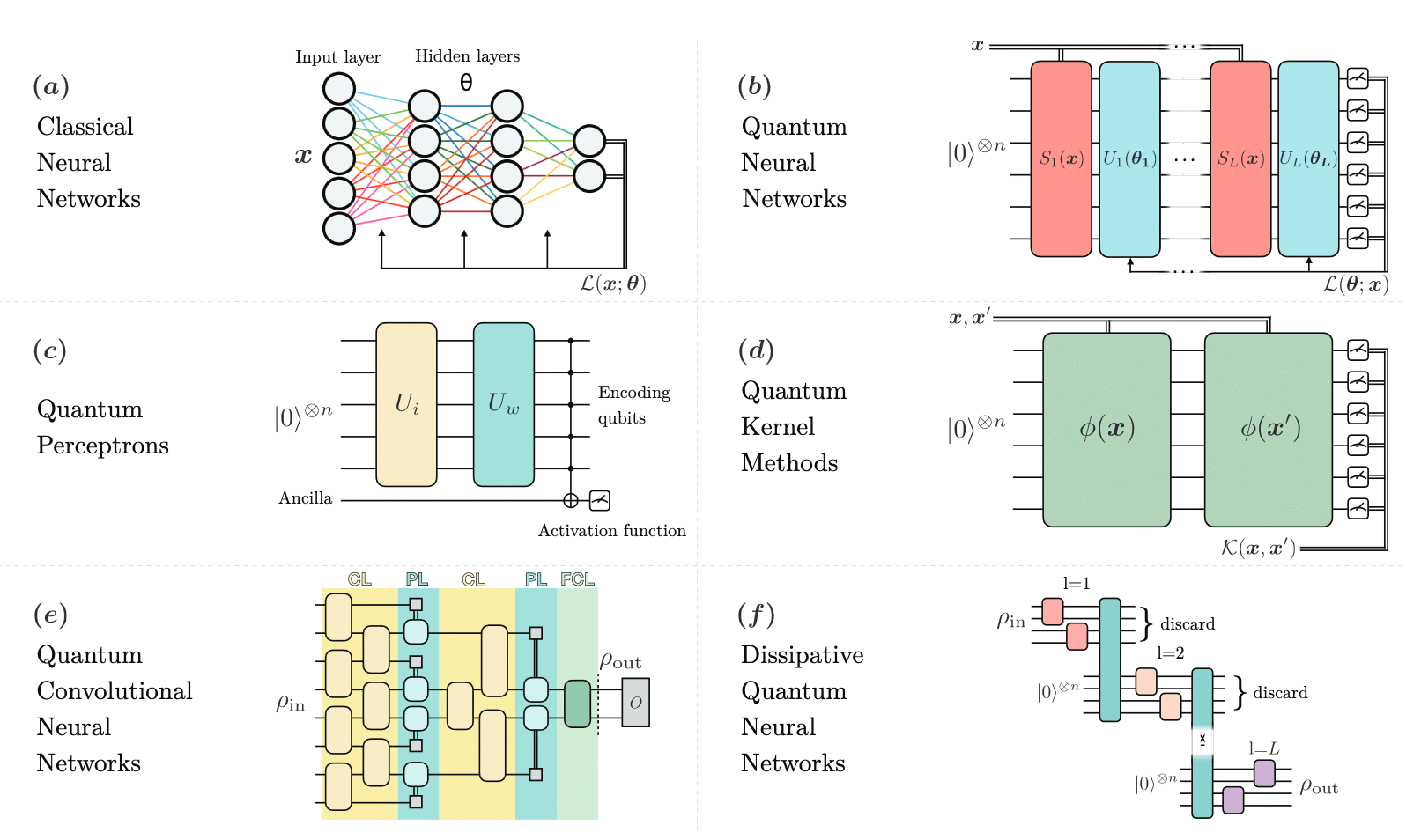
Hybrid quantum-classical algorithms
Since quantum computers are still limited in terms of scalability and error rates, hybrid quantum-classical algorithms have emerged as a practical solution. Hybrid algorithms use quantum circuits for parts of the computation, where quantum computing offers advantages (e.g., specific optimisation tasks), while classical systems handle the rest.
Two popular hybrid algorithms are the Variational Quantum Eigensolver (VQE) and the Quantum Approximate Optimization Algorithm (QAOA).
VQE: VQE is commonly used for solving optimisation problems, especially those related to chemistry and materials science. By adjusting parameters within a quantum circuit, VQE minimises the energy of a system, which can be applied to find optimal solutions in complex machine learning tasks.
QAOA: QAOA is another hybrid algorithm suited for combinatorial optimisation problems. It combines quantum circuits with classical optimisation steps to solve problems that involve finding optimal arrangements, such as job scheduling and network optimisation.
These algorithms can be implemented using open source tools like PennyLane and TensorFlow Quantum, both of which support hybrid models and provide prebuilt functions for VQE and QAOA. A practical example would be using VQE in a hybrid model to optimise a neural network’s weights, potentially leading to faster convergence and better model accuracy.
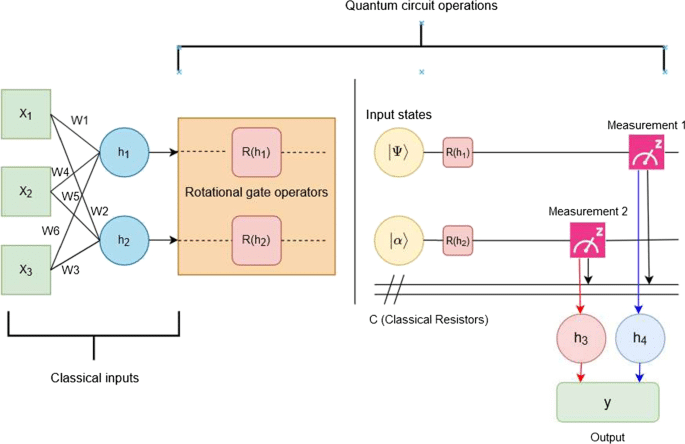
Challenges and future directions
Quantum machine learning holds significant promise, but there are challenges that need to be addressed for it to achieve widespread adoption. One of the biggest obstacles is quantum hardware limitations. Current quantum computers are still in the noisy intermediate-scale quantum (NISQ) era, meaning that they are prone to errors and lack scalability. These limitations affect the reliability of quantum machine learning models and hinder their ability to generalise to larger datasets.
Scalability is another concern, as quantum machine learning models are difficult to scale due to hardware constraints and algorithmic challenges. Moreover, developing models that can generalise across different data distributions requires advances in both quantum hardware and quantum algorithms. There is a pressing need for error correction techniques that can reduce noise in quantum computations as well as for new algorithms that are robust and can address quantum-specific limitations.
Despite these challenges, the future of quantum-enhanced machine learning is promising. With ongoing advancements in quantum hardware and open source software, we can expect to see more practical applications of quantum machine learning in areas such as healthcare, finance, and materials science. Emerging trends, such as quantum federated learning and distributed quantum AI, are paving the way for new possibilities in data privacy and collaborative machine learning. The integration of quantum and classical systems is also likely to grow, offering powerful hybrid solutions for complex problems.
Open source frameworks are accelerating the development of quantum-enhanced machine learning, bridging the gap between quantum computing and AI. By offering accessible and cross-platform tools, frameworks like Qiskit, PennyLane, and TensorFlow Quantum enable researchers and developers to experiment, innovate, and share their work in this transformative field. While there are still challenges to overcome, the future of quantum machine learning is bright. As quantum hardware improves and new algorithms are developed, we can expect quantum-enhanced AI models to tackle increasingly complex tasks, opening new frontiers in both quantum computing and artificial intelligence.




















